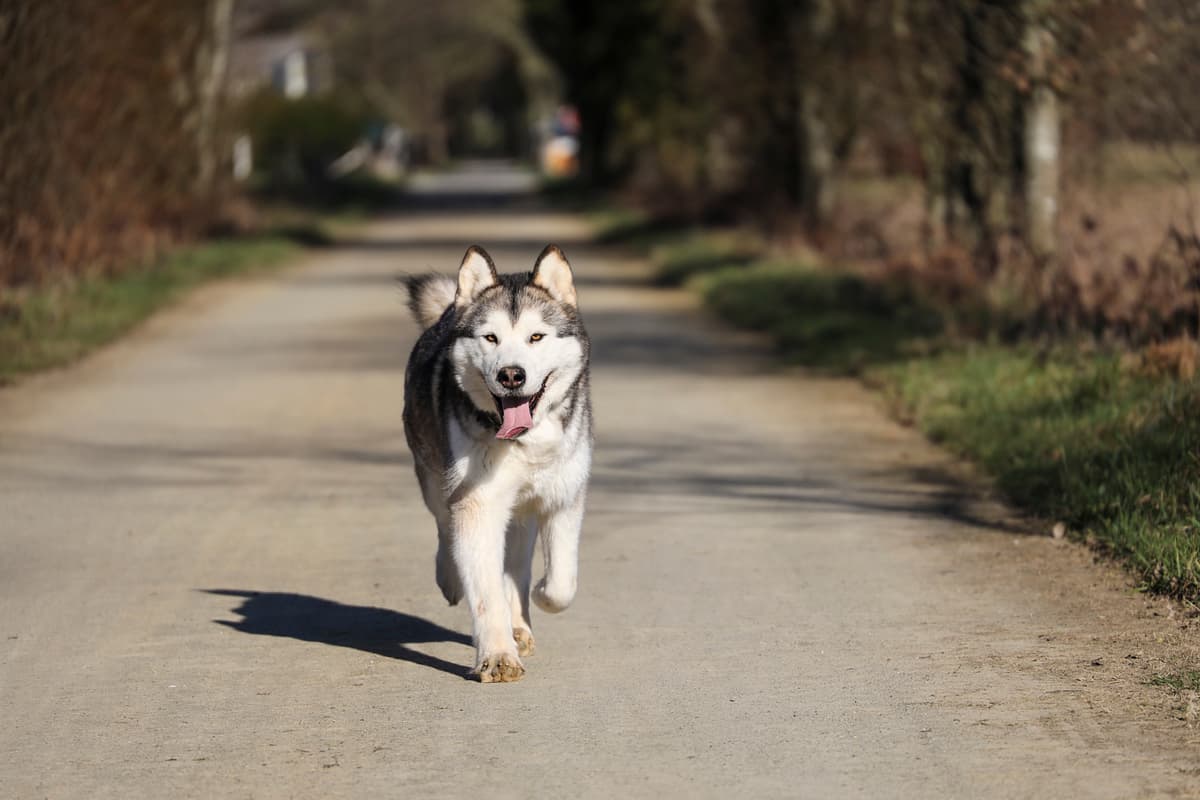Alaskan Malamute vs Labrador Retriever
Discover the differences between Alaskan Malamute and Labrador Retriever to make the best choice for your situation.
Try different breeds

Alaskan Malamute
A powerful, affectionate, and loyal companion with a striking wolf-like appearance. Thrives in active households and enjoys being part of family adventures and outdoor activities.

Labrador Retriever
Eager, friendly, and intelligent, this breed loves being part of an active family. Their gentle nature and loyalty make them outstanding companions for all ages.
Quick comparison
Large
36–43 kg
Double coat, dense undercoat
10–14 years
32–38 kg
High energy
Large
29–36 kg
Short double coat, water-resistant
10–12 years
25–32 kg
High energy
Personality & behavior
Compare the personality traits and behavioral characteristics of both breeds.
Alaskan Malamute
Affectionate with family, reserved with strangers
Learns quickly but can be independent
Very active, needs regular vigorous exercise
Enjoys games, playful with people
May struggle with new environments or routines
Labrador Retriever
Warm and sociable with people and animals
Quick learner, responds well to training
High stamina, enjoys active pursuits daily
Loves games and interactive activities
Adjusts easily to new situations and environments
Care needs
Exercise, grooming, and daily care requirements
Alaskan Malamute
Hip dysplasia, cataracts
Labrador Retriever
Hip dysplasia, elbow dysplasia
Suitability
How well each breed fits different living situations and families
Alaskan Malamute
Challenging for novices
Strong-willed nature needs experienced handling and training
Not apartment friendly
Needs ample space and exercise, easily bored in small areas
Excellent for active homes
High stamina suits owners with energetic lifestyles and outdoor activities
Good with older kids
Patient but strong; supervision needed around very young children
May need supervision
Can live with other pets but strong prey drive can cause issues
Not suitable
Dislikes being left alone, prone to destructive behavior if bored
Labrador Retriever
Great choice
Patient and eager to please, Labradors are manageable for most first-time owners.
Not ideal
Labradors need space and exercise, so apartments can limit their activity needs.
Perfect fit
High energy and stamina make them excellent for active individuals or families.
Highly suitable
Gentle temperament and playful nature make them safe and loving with young children.
Very friendly
Generally sociable and get along well with other dogs and pets.
Prone to anxiety
Extended alone time can lead to boredom and destructive behaviors in this breed.
Breed strengths
What each breed excels at and their best qualities
Alaskan Malamute
- Strong working ability and stamina
- Loyal and affectionate with family
- Tolerant of cold weather conditions
- Intelligent and quick to learn tasks
- Social with people and other dogs
Labrador Retriever
- Friendly and sociable with people and dogs
- Highly trainable and eager to please
- Excellent with children and families
- Strong retrieving and swimming abilities
- Generally adaptable to various living situations
Challenges & considerations
Potential challenges and considerations for each breed
Alaskan Malamute
- High exercise and activity requirements
- Prone to digging and escape attempts
- Heavy seasonal shedding and grooming needs
- Can be stubborn or independent-minded
- Not suited for hot or humid climates
Labrador Retriever
- Prone to obesity without portion control
- Can become destructive if under-exercised
- Heavy seasonal shedding requires regular grooming
- May develop hip or elbow dysplasia
- Needs significant daily physical activity
Ready to choose your perfect breed?
Learn more about each breed or compare other breeds to find the perfect match for your lifestyle.
Discover more helpful tools
Make use of our other free tools to get the most out of your pet experience
